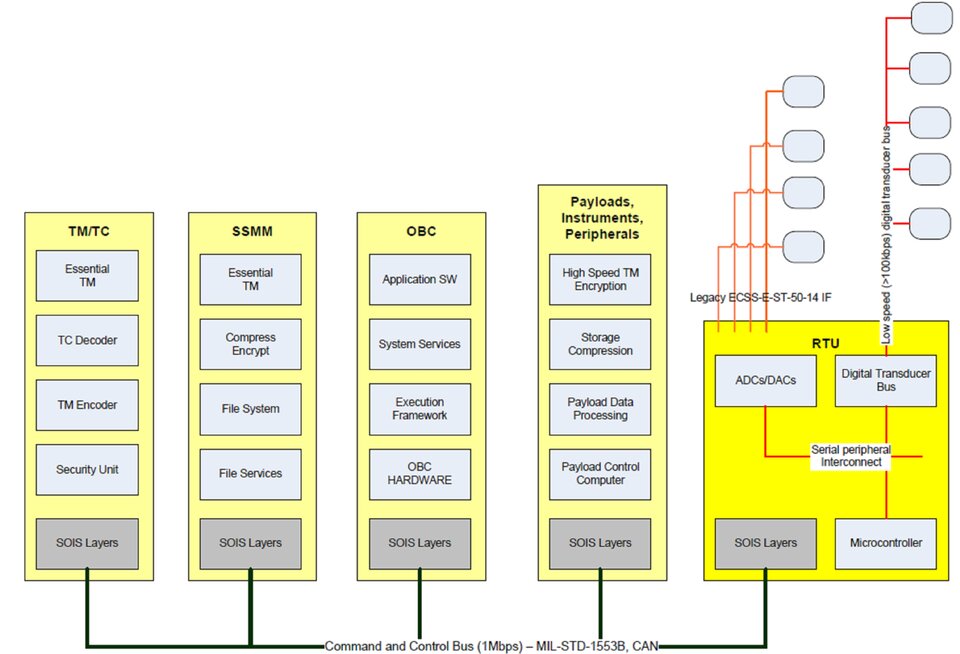Digital Sensor Bus
Simpler and leaner avionic systems
The overall objective of reaching towards simpler and leaner avionic systems is pursued with the migration from ad-hoc point-to-point interfaces towards the definition of a comprehensive solution for sensors connection to and within Remote Control Units.

Classically the solution, as standardized in ECSS-E-ST-50-14C is to have each sensor hardwired connected to Remote Unit via a dedicated line. The acquisition of all signals is performed by the Remote unit which includes analogue to digital converter modules or discrete monitoring interfaces.
With an all-digital solution, each sensing node is not simply a 'sensor' but it becomes a micro Remote Terminal Unit in itself that is able to provide, depending on the application, an analogue/digital data conversion, a buffer for a temporary storage of the data and for permanent storage, controller and transceiver into a small and a light component.
The resulting TRAnsducer Network System [TRANS2015] integrates all of the required measurement functions (e.g. analog signal conditioning, analog-to-digital conversion, digital signal processing, etc.) into small electronic modules that can be placed inside a traditional unit making it a 'Smart Sensor' or in a miniature module that can interface to existing analog transducers and will eliminate most interconnecting lines and cables increasing the system's performance and reliability.
In this framework, use of two low speed digital serial busses is under standardization process: SPI for intra board connection, I2C for intelligent transducer networks.
By applying in an extensive way ECSS compliant interfaces (ECSS-E-ST-50-12C, ECSS-E-ST-50-13C, ECSS-E-ST-50-14C, draft ECSS-E-ST-50-15C, ECSS-E-ST-50-51C, ECSS-E-ST-50-52C) instead of the proprietary ones that are often used today, the opportunity is open for the development of units and components modular and upgradeable than can be used across different missions.

